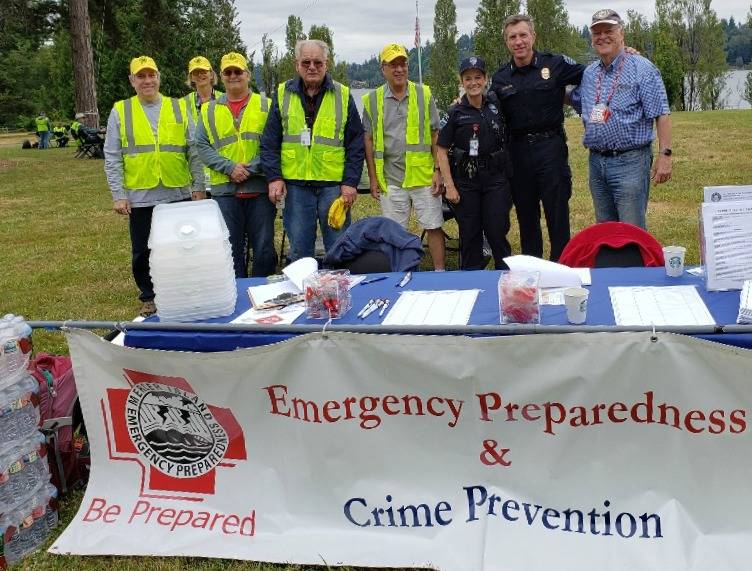It all began on Jan. 20, 1993.
On the day Bill Clinton was inaugurated as the 42nd United States president, an immense storm packed with 80 mph winds ripped through Washington state, felling huge trees on Mercer Island and knocking out the area’s high-voltage distribution. Sections of the Island were without power for a week.
“It was that event that caused the emergency preparedness officer of Mercer Island to say, ‘We’ve gotta have a backup,’ because cell phone sites went down, the police lost their repeaters and so forth,” said Island resident Woody Howse.
Around that time, police reached out to the 60 or so Island ham radio operators, and the Mercer Island Amateur Radio Emergency Net was sworn into its own office to begin working as the official backup communicators for the city and police and fire departments. The organization now operates under the moniker of Mercer Island Radio Operators (MIRO).
Since 2013, Howse has been the chairman of the devoted and diligent 94-person group, which was founded by former Island public safety director Ron Elsoe and Bob Farmer.
“I don’t think any other small city in the region has such a dedicated crew of radio operators. If and when cell coverage is lost during a major emergency event, this will be an incredible asset,” said Jennifer Franklin, Mercer Island Police Department emergency preparedness officer.
The group’s net is conducted on the MIRO VHF repeater frequency of 147.160 MHz positive offset tone 146.2 Hz; on the UHF repeater, frequency is 440.150 MHz positive offset tone 103.5. MIRO works out of its radio room on the lower level of city hall, has a backup radio room in the Community Event Center at Mercerview and can utilize VHF and UHF voice radios at the north and south fire stations. A shared communication tower at the water reservoir — on the highest point on the Island — houses its radio repeaters.
Howse — who earned his ham radio license in 2008 — noted that MIRO also utilizes WINLINK, a new communications method where operators can send digital messages from their computers over the radio frequencies or Internet.
Pat Hackett, MIRO’s vice chair for training and recruitment, got on board with emergency preparedness four or five years ago when she perused a New Yorker article about a major earthquake on the horizon.
“It scared me to death. At that point, I began to research what you do in a major earthquake of 9.0 and began to take some emergency preparedness courses that the city offers,” said Hackett, who delved into CPR, search and rescue and then received her ham radio license.
Hackett was all smiles when noting that she found her people when joining MIRO: “It was such a great group of concerned citizens.”
After meeting Franklin, Hackett began helping out with neighborhood projects, and like Howse and other MIRO members, she became a city-badged volunteer.
“It’s just been a great journey, and I’ve organized my neighborhood of 50 houses,” Hackett said. “We’re trying to get the Island organized and ham radio is always a big part of that presentation. (People ask) ‘What happens if the cell towers go down?’ Well, here’s what you do.”
Howse said that MIRO members are constantly training in the radio realm and checking in with the state of Washington Emergency Operations Center at Camp Murray in Lakewood and with local and regional Amateur Radio Emergency Service (ARES) organizations each week. They’ve also provided communication during community events like a half marathon and when darkness descended on the pumpkin walk.
Sans radios, many members have taken Community Emergency Response Team (CERT) and Incident Command System (ICS) training to help out in the community. Notably during the coronavirus pandemic, Howse said that MIRO’s Dave and Kendra Uhler created a phone center where volunteers could connect with those in need with grocery shopping and more.
“We are there in more ways than just radio,” Hackett said.
For more information, visit https://miro.cmivolunteers.org/


